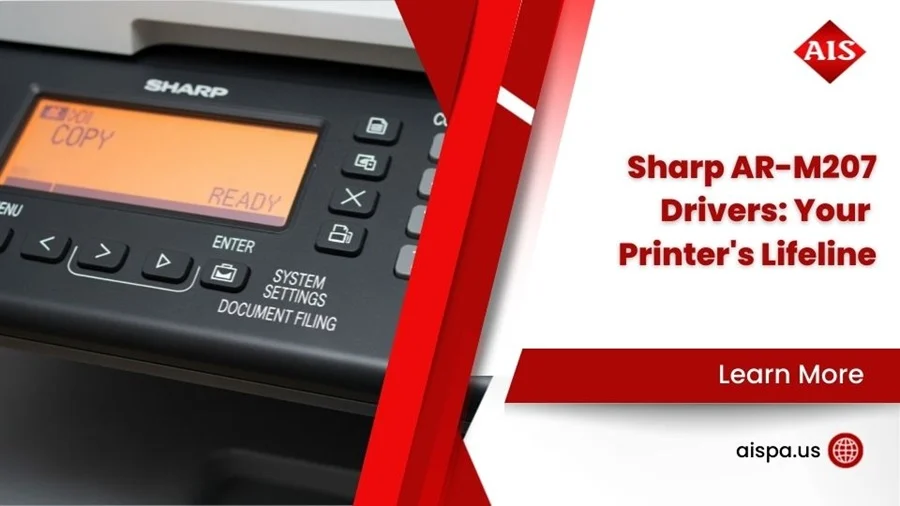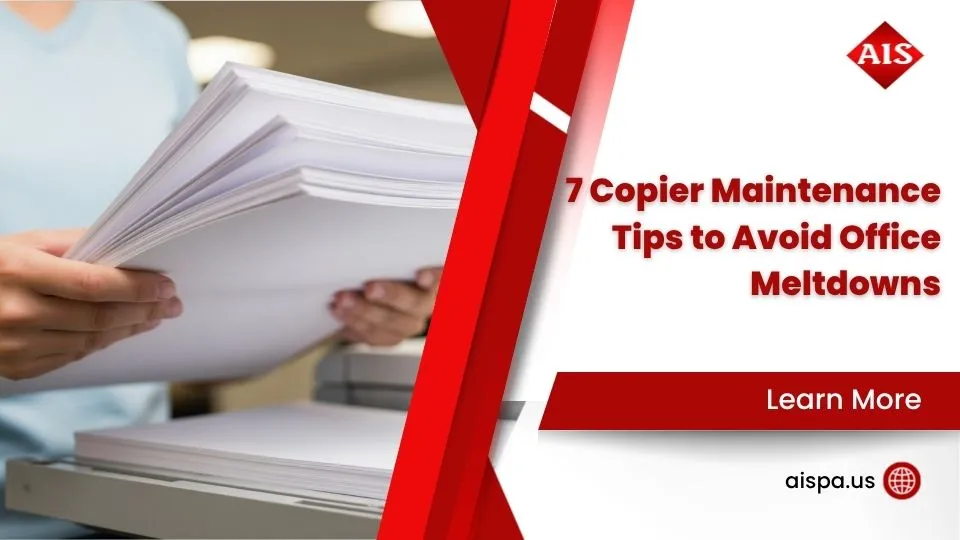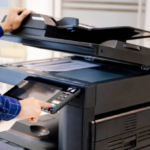What Is Laser Printer? the Essential Guide to Laser Printing Technology
What Is Laser Printer?
Laser printer technology is a vital component of the modern printing industry. A laser printer utilizes a laser beam to transfer an electrostatic image onto a piece of paper or other medium. The laser beam creates a static electrical charge that attracts toner particles out of a toner cartridge, which then adheres to the paper. This method creates sharper text and images than traditional inkjet printers, as well as being able to print on a wider range of materials.
Laser printers are more reliable, faster, and cost effective than inkjet printers, making them the ideal choice for businesses and home offices.
The essential guide to laser printing technology will provide an in-depth exploration of the components of the laser printer, how it works, and the advantages it provides. It will provide detailed instructions on how to load and operate the printer, how to maintain it, and troubleshooting tips to resolve any issue that may arise.
Overview of Laser Printer Technology
Laser printers are a type of printer that use a laser beam to produce an image or text onto paper. Unlike inkjet printers, which use ink cartridges and nozzles to create an image, laser printers use a charged toner that is transferred onto paper from a drum.

A monochrome laser printer produces black-and-white prints, while a color laser printer can produce full-color prints, along with text and graphics. Laser printers can be more expensive than inkjet printers, but they are typically faster and offer better print quality. Laser printers use a laser to draw the image onto a corona-charged drum.
What Is Laser Printing?
Stepping away from inkjet technology, let’s take a look at laser printing. Laser printing is a type of printer that uses a laser to form an image on the drum. The laser light hits the positively charged areas on the drum, creating a negatively charged toner. The toner is then rolled onto the paper and heated, creating the image on the paper.
Laser printers typically produce faster print speeds compared to inkjet printers, and offer sharper image quality as well. They are also capable of printing onto a variety of paper types, such as cardstock or glossy paper. Many laser printers can also scan, copy, and fax, making them a multifunctional device.
How Does a Laser Printer Work?
Having discussed what is laser printing, it is now time to explore how a laser printer works. First, the printer receives the document to be printed by connecting the printer to a computer or other device. The laser printer then uses a laser beam to produce an image on the drum.
The laser beam hits the negatively charged toner particles, which are then attracted to the areas on the drum that are positively charged. The toner is then rolled onto the surface of the paper as it passes through the printer. The image is then fused to the paper by passing it through a heated roller. This process helps to create the sharp, high-quality text and graphics that laser printers are known for. The paper is then ejected from the printer, and the cycle begins again.
Advantages of Laser Printing Technology
The advantages of laser printing technology are vast and varied, making it a popular choice for a wide range of businesses and individuals. Laser printers can print much faster than inkjet and laser printer may print up to 25 pages per minute. In addition, laser printers offer higher resolution and more consistent color printing. Laser toner also lasts longer than inkjet cartridges, making it a more cost-effective option in the long run.
Furthermore, laser printers come with a paper tray and generally have a higher paper capacity than inkjet printers, making it easier to print large volumes of documents. The paper passes through a system of rollers before it is exposed to a laser beam that is used to create the image onto the sheet of paper.
Differences Between Laser and Inkjet Printers
Comparing laser and inkjet printers is a complex task because of the vast differences in their printing speed and quality, cost and maintenance, and outputs and capabilities. Laser printers generally produce sharper text than inkjet printers, and they are capable of printing much faster.
Additionally, laser toner cartridges are more expensive than inkjet cartridges, but the cost of toner is generally lower in the long run. On the other hand, inkjet printers can produce a much wider range of colors and are typically less expensive than laser printers.
Printing Speed and Quality
When it comes to printing speed and quality, the differences between laser and inkjet printers are stark. Laser printers are generally much faster than inkjet printers, and they produce sharp and clear text and graphics. This is because laser printers use toner, which is a dry powder-based substance that is negatively charged, to create a laser-transferred image onto the paper. Inkjet printers, on the other hand, use liquid ink droplets that are sprayed onto the paper.
Unlike inkjet printers, laser printers don’t have a waiting period for the ink to dry. Laser printers are also more versatile when it comes to paper sizes.
Cost and Maintenance
When discussing the differences between laser and inkjet printers, cost and maintenance are key topics. Laser printers are typically more expensive up front, but the cost of toner cartridges is much lower than that of inkjet cartridges. This means that, in the long run, a laser printer can be more cost effective to operate than an inkjet. In addition to cost of operation, laser printers require less maintenance.
Since there is only one consumable component—the toner cartridge—replacement is quick and easy, and aside from that, there are no other parts that need to be regularly replaced. Laser printers are also known for their reliability, making them a great solution for those who want to quickly and easily print documents without spending a lot of time and money on maintenance.
Outputs and Capabilities
Making their mark in a variety of settings, laser and inkjet printers are two distinct printing technologies. When comparing outputs and capabilities, laser printers excel at producing high-quality, professional-looking documents, while inkjet printers tend to be more versatile and cost-effective. Laser printers use a laser beam to produce an image on the drum, which is then rolled with negatively charged toner particles.
The particles stick to the positively charged areas of the drum, which are then transferred onto the paper. With laser printers, the paper passes through a roll of heated drums, allowing for a faster printing speed than inkjet printers. On the other hand, inkjet printers use a series of tiny nozzles to create an image on the page by spraying ink droplets onto paper.
Common Uses for Laser Printers
A laser printer is the best choice for a variety of tasks. Whether it’s printing documents, creating graphics, or producing labels and cards, the best laser printer will give you the greatest output. When comparing laser printers and inkjet printers, laser printers are more expensive than inkjet.
However, laser printers produce sharper images and better text quality than inkjet printers. Laser printers produce these results because laser printers use a laser beam to draw an image inside the printer. Instead of using ink, the laser printer uses toner powder that is electrostatically charged and then rolled onto a drum and then transferred to the paper.
Printing Documents
The advantages of laser over inkjet printers for certain tasks are clear, but what are they best used for? Printing documents is one of the primary functions of laser printers. A scanner is used to first transfer a document into a digital format before the laser printer’s multifunction printer processes the data and prints out the physical copy.
The difference between an inkjet and laser printers is that a laser printer’s laser hits the printer drum, transferring toner particles onto the paper. As a result, laser printers are typically less expensive and much faster than inkjet printers when used for printing documents. The laser printer uses a laser light to create an image on the drum inside the printer.
Creating Graphics
The difference between an inkjet and a laser printer is clear; however, what do these printers offer when it comes to creating graphics? Laser printers are great for creating graphics and are used in a variety of industries, including technology, education, design, and manufacturing.
When using a laser printer for graphic reproduction, a laser beam is used to draw the image onto a photosensitive drum. The drum then acquires a negative electrical charge, which attracts tiny, negatively charged toner particles. The drum is then rolled over the paper, transferring the image onto it. Laser printers are able to quickly produce high-quality graphics with smooth tonal gradients and sharp lines.
Producing Labels and Cards
Moving away from the comparison of inkjet and laser printers, let’s explore a common use for laser printers: producing labels and cards. Laser printers are known to produce incredibly sharp text and graphics, making them ideal for printing labels and cards. In contrast to inkjet printers, laser printers are able to quickly and accurately produce professional-looking labels and cards.
The process starts when the printer receives data from a connected computer. The printer then uses a laser beam to transfer an image to a drum, which is then rolled in toner. The positively charged toner particles are attracted to the negatively charged areas of the drum, and the image is transferred to a sheet of paper. The paper passes through a heated fuser, which melts the toner onto the paper’s surface.
Choosing the Right Laser Printer
When it comes to choosing the right printer, it is important to know the difference between inkjet vs laser printer’s capabilities and features. Inkjet printers and laser printers are the two main types of printers used today. Laser printers are typically more expensive than inkjet printers, however they offer faster printing speeds, better print quality, and are better suited for higher-volume printing. Laser printers are used for tasks such as printing documents, photos, and other types of images. Inkjet printers are typically less expensive and are better suited for printing photos and color images.
Types of Laser Printers
The transition from the previous section has been made, and now it’s time to dive into the details of choosing the right laser printer. When selecting the right laser printer for your needs, it’s important to understand the different types of laser printers available.
Laser printers can be divided into three categories: monochrome laser printers, color laser printers, and multifunction printers. Monochrome laser printers are designed to print only in black and white, while color laser printers can produce both black and white and color prints. Multifunction printers, as the name implies, can print, copy, scan, and fax documents.
Monochrome laser printers are ideal for printing text-based documents, while color laser printers are best for printing graphics and images.
Features and Specifications
Now that you understand the uses of laser printers, it is important to consider the features and specifications when choosing the right laser printer. Laser printers come in a variety of types, from monochrome to color laser, multifunction and more. The type of printer is best determined by your needs and budget. When comparing an inkjet printer or a laser printer, consider the quality of the print, the speed of the printer, the volume, and the ability to connect the printer to other devices.
When evaluating the features and specifications of a laser printer, it is important to consider the printer speed. A laser printer is used for many tasks, including printing text and graphics, so you will want to know how quickly the printer can output pages per minute.
Printing Costs and Consumables
When it comes to the cost and consumables of a laser printer, it is important to consider your printing needs and budget. Laser printers are more expensive than inkjet printers, but they also require less frequent maintenance. The toner cartridges for a laser printer are more expensive than the ink cartridges for an inkjet printer, but they also last much longer. It is important to understand the cost of consumables for a laser printer to determine if the price of the printer is worth the cost of its maintenance.
The amount of toner a laser printer uses can depend on the type of images and documents being printed. Text documents require less toner, while documents with graphics need more.
Tips for Using Laser Printers
Laser printers are renowned for their superior print quality and speed compared to inkjet printers. To get the most out of a laser printer, it is important to understand the basics of maintenance and troubleshooting, optimizing print settings, and choosing the right paper.

Maintenance and troubleshooting are key to getting the most out of a laser printer. To keep a printer running efficiently, regularly check for paper jams, empty toner cartridges, and other issues that can cause problems. Making sure the printer is clean and well-maintained will help reduce the frequency of paper jams and other problems.
Maintenance and Troubleshooting
Having chosen the right laser printer for your needs, it is also important to understand how to maintain and troubleshoot it. Properly caring for your laser printer ensures that it will have a long life and continue to produce high-quality prints. As a printer technician, it is important to be aware of the basics of maintaining and troubleshooting a laser printer.
To ensure your printer runs smoothly, you should check the toner and paper levels regularly. Additionally, you should make sure to keep the laser printer’s exterior clean, as dust and dirt can cause problems with the printer. It is also important to keep the printer away from direct sunlight and areas with extreme temperatures.
Optimizing Print Settings
Carrying on from the previous section, Optimizing Print Settings is a crucial step when utilizing laser printers. Various adjustments can be made to ensure optimal output quality for the job in question. To start, the resolution of the printer should be set according to the type of project.
For instance, a higher resolution should be used when printing a photograph or an image with a lot of detail, while a lower resolution can be used for text documents. Next, the paper type should be selected based on the printer’s specifications. In some cases, a more expensive paper type is required to ensure the best quality of the print. Additionally, it is important to test different settings prior to starting the printing process, as this will help to minimize any potential errors.
Choosing the Right Paper
Choosing the right paper for your laser printer is essential for getting the best possible results. The type of paper you select can impact the print quality, print speed, and even the life of the printer itself. For example, thicker paper types are less likely to jam in the printer and are less likely to cause wear and tear on the machine.
Different laser printers may also require specific types of paper to work optimally. To ensure the best results, always check your printer’s user manual for the recommended paper type and determine if any other special features or settings are needed. Additionally, be sure to select the correct paper size for your printer. If the paper is too small for the printer, it can cause the printer to jam or fail to recognize it.
Conclusion
Laser Printer technology is an advanced printing technology that can be used for a variety of tasks, from printing text to graphics. The technology works by using a laser beam to create a negatively charged toner that is then rolled onto the drum. This drum then receives an image, which is transferred onto the paper as it passes through the printer. Laser printers offer superior print quality and speed when compared to inkjet printers, and are better suited for printing large volumes of text or graphics.
However, laser printers are typically more expensive than inkjet printers and require more maintenance. Ultimately, the right printer for you will depend on your individual needs and budget.
For more information and services you can contact us for a free quote and estimation.
- Address: 165 Veterans Way, Warminster, PA 18974
- Email: sales@aispa.us
- Call Us: (215) 999-8445











